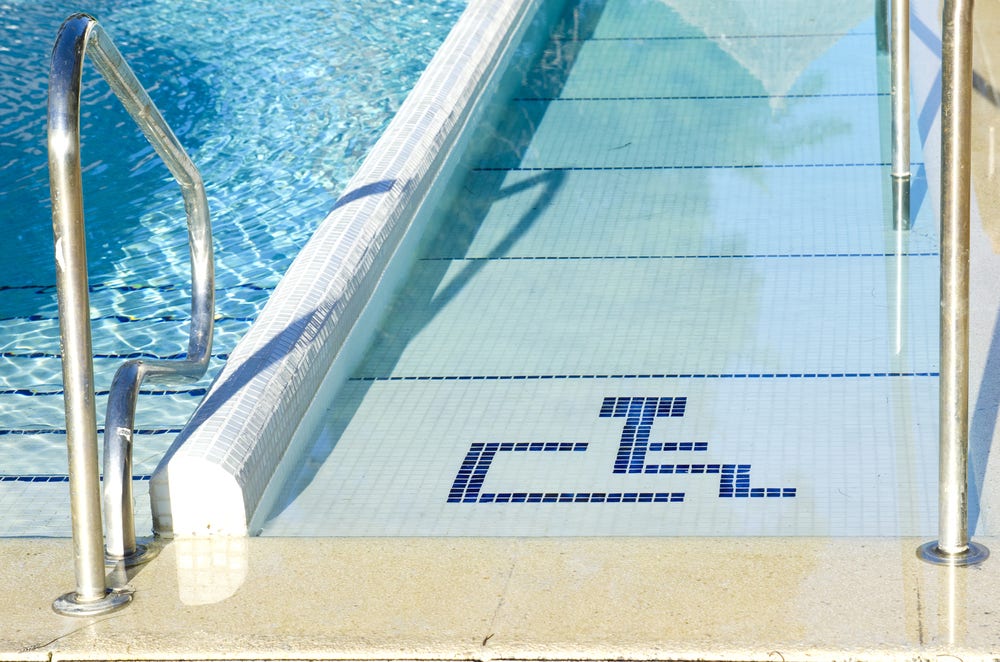
7 Benefits of Swimming for People With Disabilities
Fewer than 50% of American adults with a mobility disability engage in aerobic activity.
Aerobic activity is essential to physical, emotional, and mental wellbeing. The good news is that there are a variety of aerobic activities that people with disabilities can engage in.
Swimming is one activity that's oftenaccessible, beneficial, and fun. If you're looking to build strength, improve your mental health, and work on your sense of independence, then swimming might be the activity for you.
Keep reading to learn more about the top seven benefits of swimming for people with disabilities.
1. Alleviates Pressure on Joints and Muscles
Being in the water is akin to being weightless. The water easily supports your body and greatly reduces the effects of gravity.
By allowing yourself to float in the water you alleviate pain and stress on your joints and even your muscles. This allows you to stretch and strengthen parts of the body that don't often experience a full range of motion.
2. Builds Muscle Strength
For people with disabilities like spina bifida or muscular dystrophy, aerobic activity is especially difficult. This is because their muscles are rigid and/or loose.
Being in the water makes those muscles easier to move and moving your muscles allows you to build strength. This is a great option when you're unable to do other types of exercises that work on muscle strength.
3. Improves Heart Health
As we've mentioned, swimming is considered an aerobic activity. Aerobic activities strengthen your heart. As your heart becomes larger and stronger, it's better able to pump blood, thereby increasing circulation.
Swimming with a disability allows you to reap these cardiovascular benefits without putting stress on the body.
4. Improves Mental Health
When you exercise, your body releases endorphins and serotonin. These chemicals improve your mood.
With regular exercise, those chemicals can impact everything from depression to anxiety. You'll notice that you're less stressed, your memory function is better, you sleep better, and you feel more relaxed and energetic throughout your day.
5. Impacts Transfer Skills
In order to swim, you have to get from your wheelchair to the pool and then from the pool back into your chair. By doing this on a regular basis, you'll improve your skills at performing transfers.
Of course, if you're taking up swimming, you should be sure to find a pool that's designed with your needs in mind. Look for pools that meet ADA guidelines, for example. Transfering in a pool that isn't adapted for people with disabilities can lead to injuries.
6. Improves Social Wellbeing
One of the greatest benefits of swimming is the social aspect. By learning to swim and regularly getting into the pool, you're sure to meet other people with disabilities who enjoy similar activities. That gives you the chance to connect with other, like-minded people and expand your social circle.
You might even decide to take up swimming more competitively. That gives you the opportunity to be part of a team, with which you can build strong bonds.
7. Supports Independence
Because of the weightlessness of being in the water, you'll be able to move more freely and without assistance. Not only is that freedom an important experience, but it gives you the confidence to imagine that you can be independent in many other ways. That independence, in turn, supports self-confidence, especially if it's something that you excel at.
Get All the Benefits of Swimming With the Help of an Accessible Vehicle
The benefits of swimming for people with disabilities range from muscle strengthening to improved mental health. This is one aerobic activity that people of any ability level can enjoy. Beyond enjoyment, though, getting into the water provides a greater sense of independence and confidence.
Getting to and from the pool should be a comfortable and effortless experience. For that, you might need a wheelchair accessible vehicle. Find out more about mobility vehicles here.

Related Articles:
- Why You Should Consider a Metal Ramp for Your House
- Which Wheelchair Ramps Will Work for My Needs?
- Wheelchair Travel Agencies and Tour Guides
- Wheelchair Exercises and Chair Exercises
- Wheelchair Accessible Tiny Homes
- Wheelchair Accessible Spring Break Destinations
- Wheelchair Accessible Rideshare
- Wheelchair Accessible Cruises
- Wheelchair Accessible Concerts
- Wheelchair Accessible Chicago Trip
- Wheelchair Accessible Campgrounds and Parks
- What is Universal Design?
- What Is the Best Wheelchair for Seniors?
- What is Non-Emergency Medical Transportation (NEMT)?
- What Is Mobility Work And What Is It For?
- What is DME?
- What Is Considered an Inclusive Playground?
- What Is a Service Dog?
- What Is Adaptive Equipment? How They Help in Your Daily Life
- What Is a Caregiver?
- What Are Some of the Best Adaptive Clothing Companies?
- Visiting Disneyland in a Wheelchair
- Veterans Day and. Memorial Day
- Types of Therapy for People with Disabilities
- Toys for Kids with Cerebral Palsy
- Top Tips for Flying in a Wheelchair
- Top 5 Wheelchair Accessible Beaches in the U.S.
- Top 12 Wheelchair Life Hacks
- Top 10 Wheelchair Accessible Cities in the U.S.
- Tips for Hosting a Disability Inclusive Holiday Party
- Tips for College Students with Disabilities
- Three Accessible American History Vacations
- The Importance of Honoring Parkinson's Awareness Month
- The Best Wheelchair Accessible Trips to Take for Every Season
- Ten Wheelchair Friendly Places to Visit Across America
- Summer Activities for Wheelchair Users
- Start a Transportation Business
- Stair Lift Cost: The Ultimate Guide for Consumers
- Special Needs Kids Gift Guide
- Service Dog Fraud: U.S. Service Dog Laws
- Returning to Driving After an Accident
- Preparing for a Flight: Air Travel with a Wheelchair
- Portable Ramps for Wheelchairs: A Buyer's Guide
- Portable Ramps for Stairs: What Should I Look For?
- Planning an Accessible Road Trip
